Some watches you just know you’re going to love as soon as you unbox them. The Lhotse from Aussie brand Ocean to Orbit is one such watch for me, but why?
Ascent to the summit!
Former car designers, David Dewitt and Siddhartha Kazami set up Australian watch brand Ocean to Orbit in 2020, with the aim of taking their shared love of mechanical watches to the next level. Both had a particular admiration for the early to mid-twentieth century watches worn by explorers in an era when a watch was a tool, a reliable companion to accompany the wearer throughout a lifetime of adventures. These watches would become permanent fixtures on their owners’ wrists, picking up battle scars along the way, scars which years later would continue to evoke memories and the trigger impromptu retellings of escapades past. It was somewhat inevitable then I guess that the brand’s first watch aims to rekindle the romance of such watches.
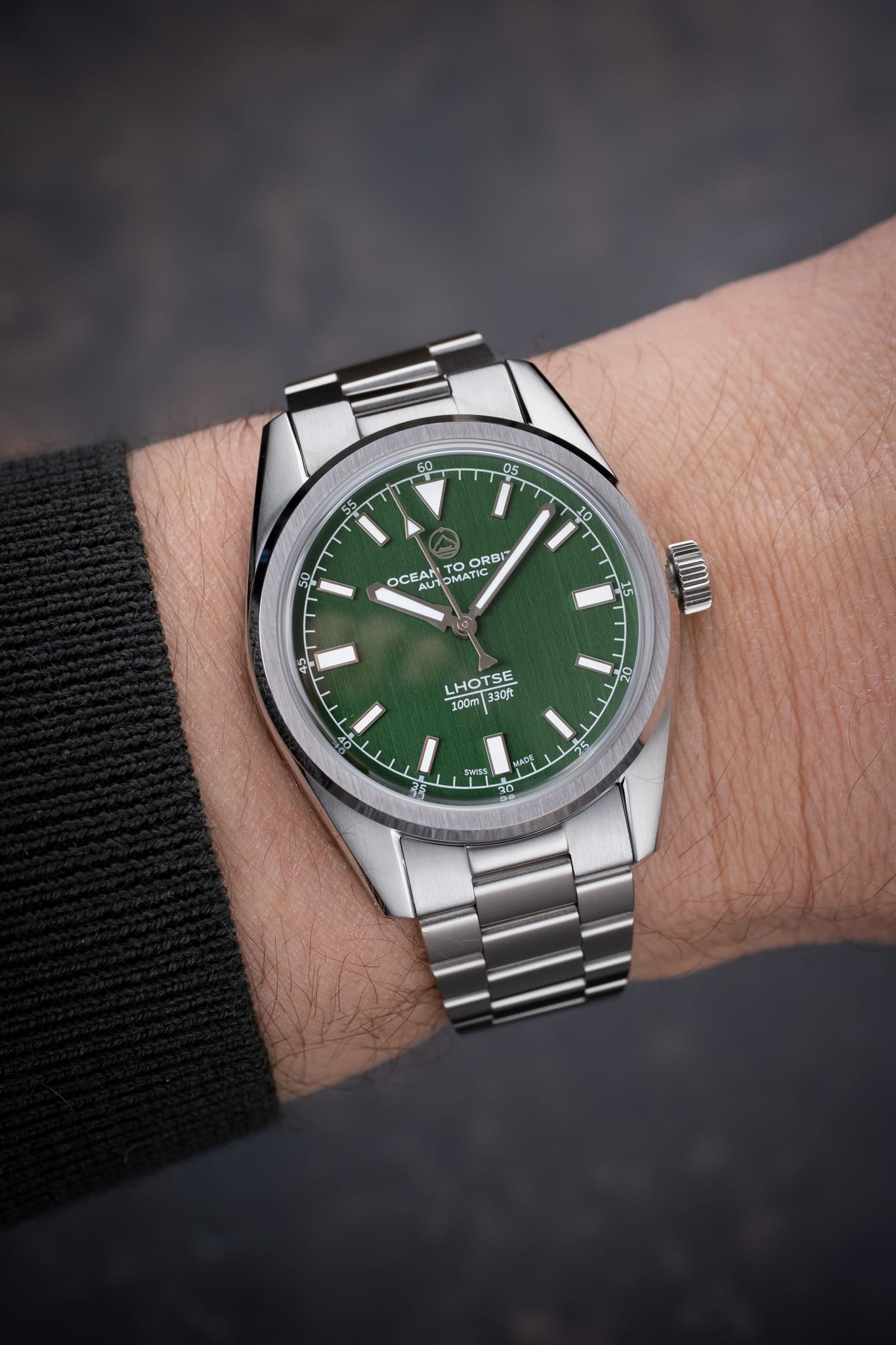
Where David and Siddhartha have been very clever though is that they’ve developed the brand’s narrative from day one, enlisting experienced Nepalese climber and photojournalist Purnima Shrestha as brand ambassador. In May 2022, Purnima summited Lhotse, the 8516-metre mountain that inspired the watch, with a prototype of the Ocean to Orbit Lhotse on her wrist. Oh, and she also climbed Makalu Mountain just for good measure. In total she spent over two months above 5000 metres. Since then, she’s gone on to be the first woman in history to climb Everest three times in a single season. Pretty cool hey?! And even if you’re not the type of watch buyer who goes in for brand ‘story’, it’s impossible to deny that Ocean to Orbit’s refreshing approach is much better than ‘faking’ an elaborate and disingenuous backstory.
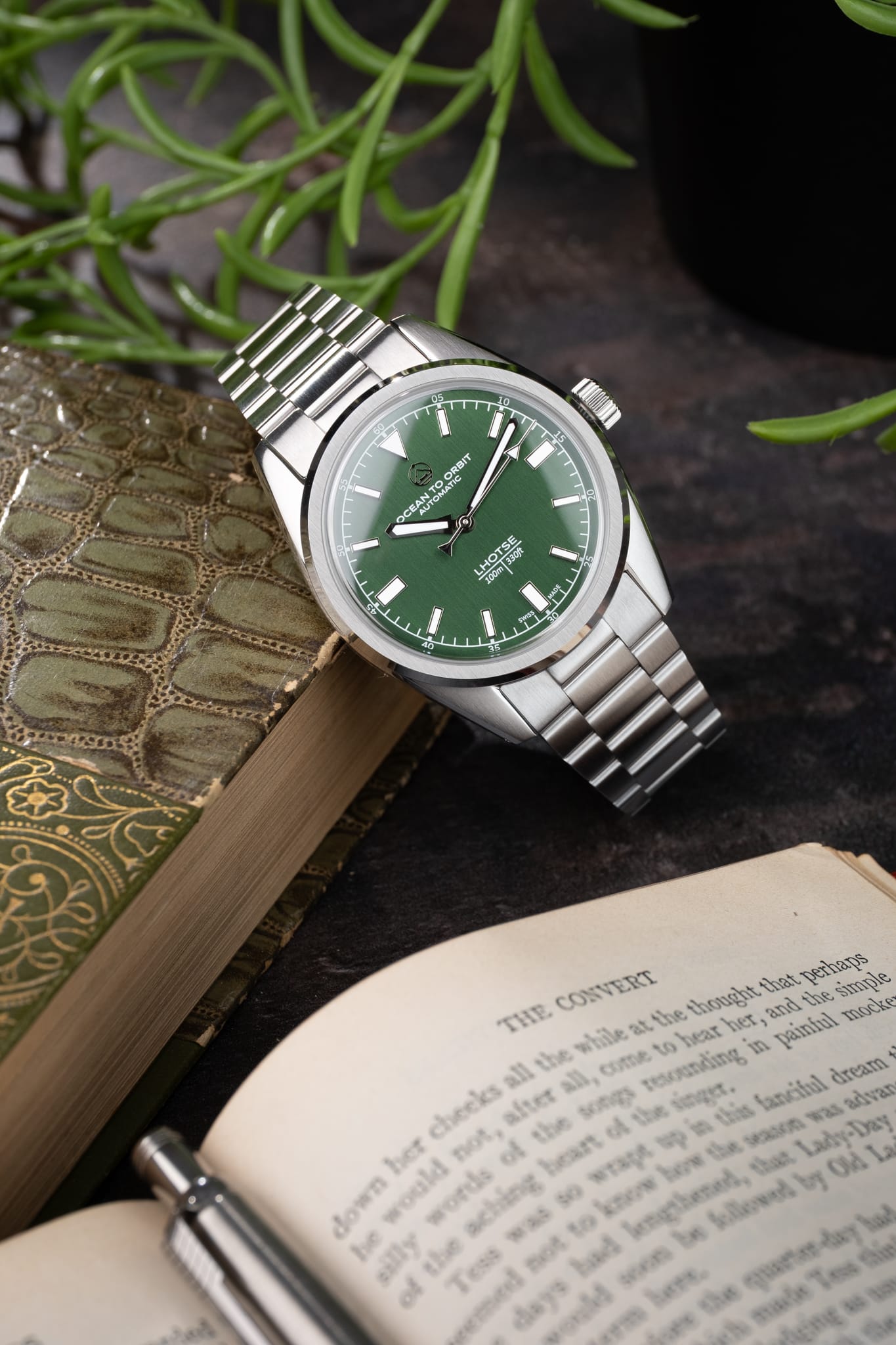
Design credentials, tick. Brand identity, tick. So far, so good then. But can former car designers put together a compelling watch?
Ocean to Orbit Lhtose Collection Overview
The Lhtose is a Swiss-made sports watch that’s on the dressier side of the spectrum. It would be equally at home being worn for office attire, taking a dip in the pool, a mountain hike, or enjoying a sundowner, a GADA watch if you like! (don’t cringe). A total of five watches are offered, four from the core collection and one limited edition. From the core collection you can choose from Blue Steel (with or without red tipped seconds hand), Classic Steel (black), Heritage (black with gold), or Mission Green as reviewed here. Finally, LHOTSE x WEM is a limited edition variant of just 50 pieces that has a metallic blue and silver tuxedo dial, made in collaboration with Watch Enthusiasts Melbourne. Core collection watches all have vertically brushed dials and can be ordered on steel bracelet for £695 or on a NATO-style Adventure strap for £625. The limited edition comes with both bracelet and Adventure strap for just £30 more. All watches come with a two-year warranty and other than the limited edition, they all share the same design, dial layout and Swiss automatic movement; it’s just the colours that vary.
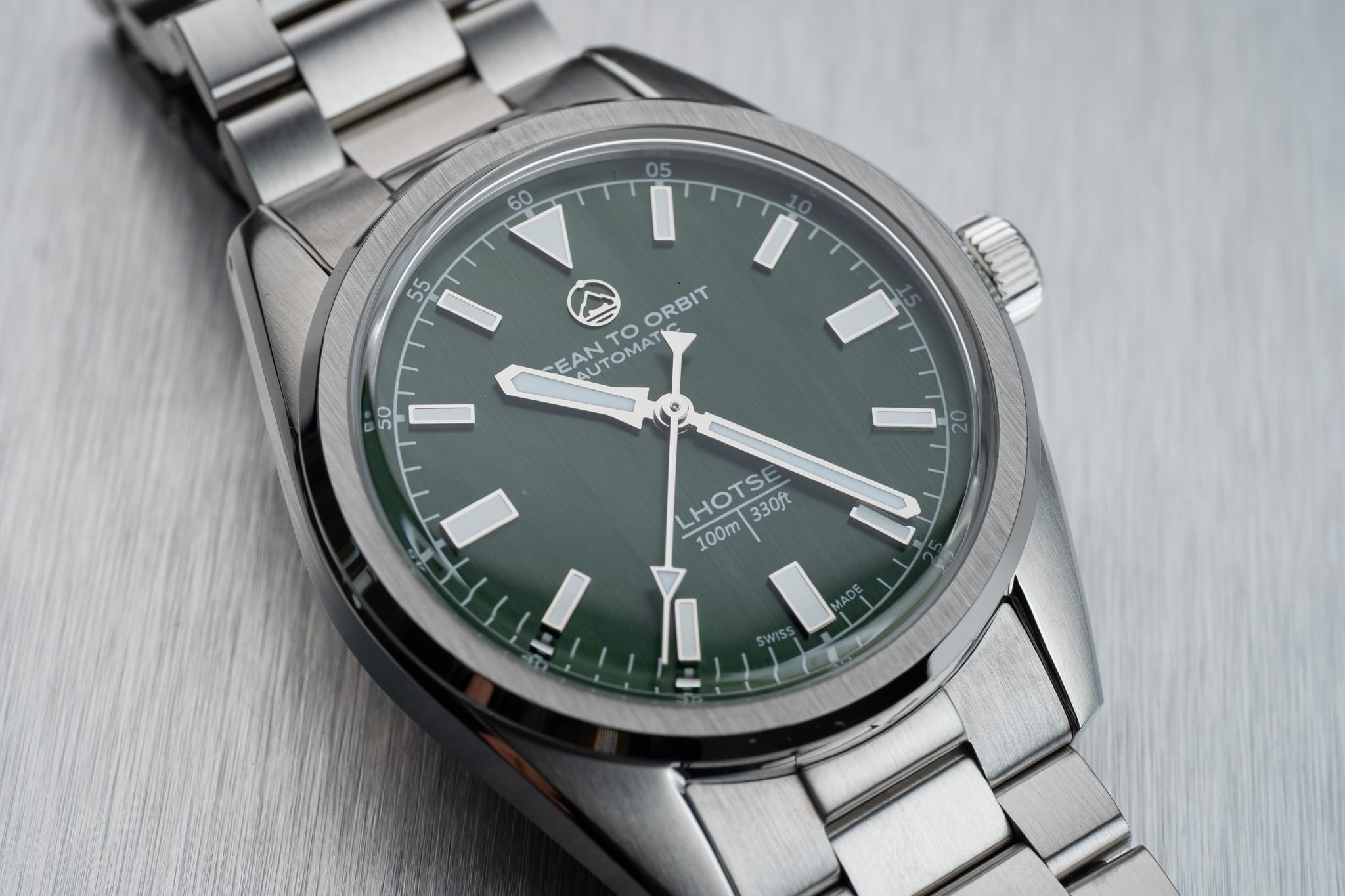

Case, bracelet and Wearing Experience
I knew within about 10 seconds of unboxing the Lhotse that I was going to enjoy my time with it. The quality is immediately obvious as soon as you set eyes on it, and even more so once you handle it. It just feels ‘right’ and is the sort of watch that wouldn’t feel out of place amongst big name ‘entry level’ luxury brands such as Oris, Longines or Tag. Everything is so well judged. It’s not too light, not too heavy, there are no sharp edges, it has a lovely slim gently arching mid-case that tapers to thin elegant lugs and has a beautifully refined bracelet.

The case diameter is 38.5mm, the lug-to-lug is 47mm and the overall thickness is 11.5mm. The proportions are bang on for this type of watch and it will suit a wide range of wrist sizes. It manages to strike the perfect balance between being sophisticated and refined, but solid feeling.
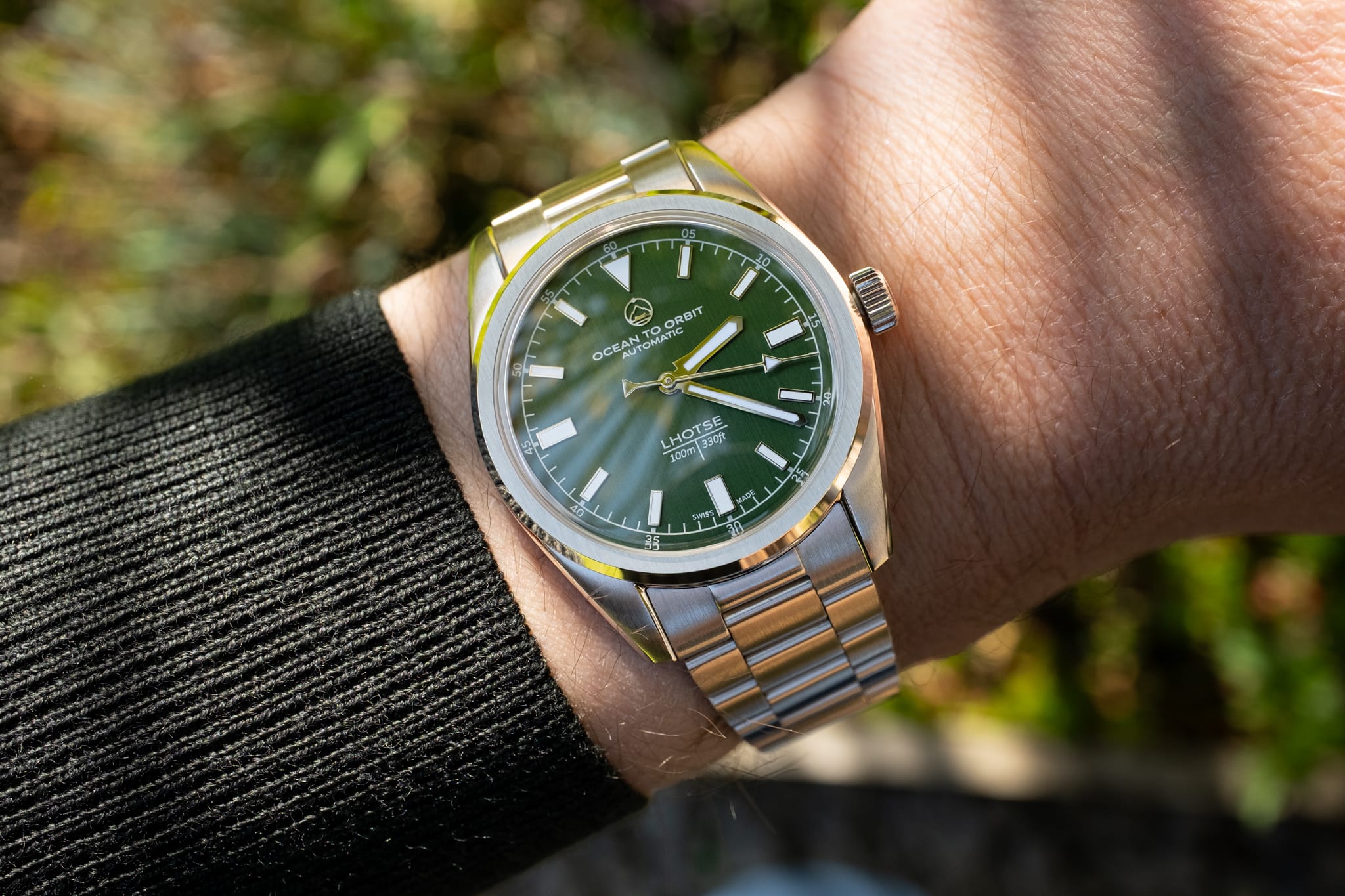
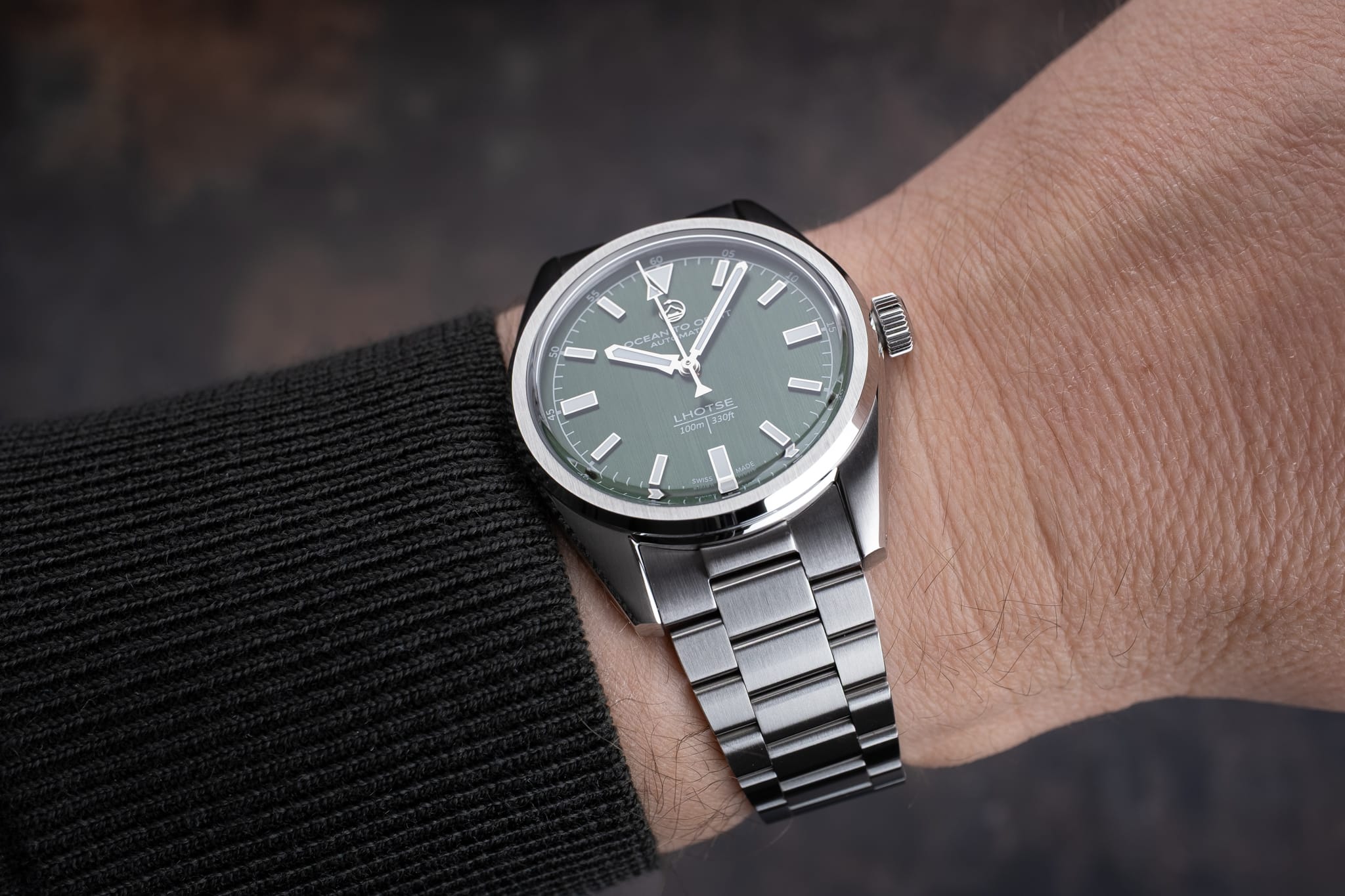
The 316L stainless steel case has a predominantly satin-brushed finish, but features wide, polished chamfers that run uninterrupted down the entire length of the sides. There are also very fine polished chamfers to the inner lugs, a lovely touch. The top surface of the bezel is vertically brushed, but the chamfered edge and sides are polished. The box sapphire with inner anti-reflective coating sits proud of the bezel and its rounded edges provide a nice distortion at the very outer edges of the dial whilst still offering excellent clarity.
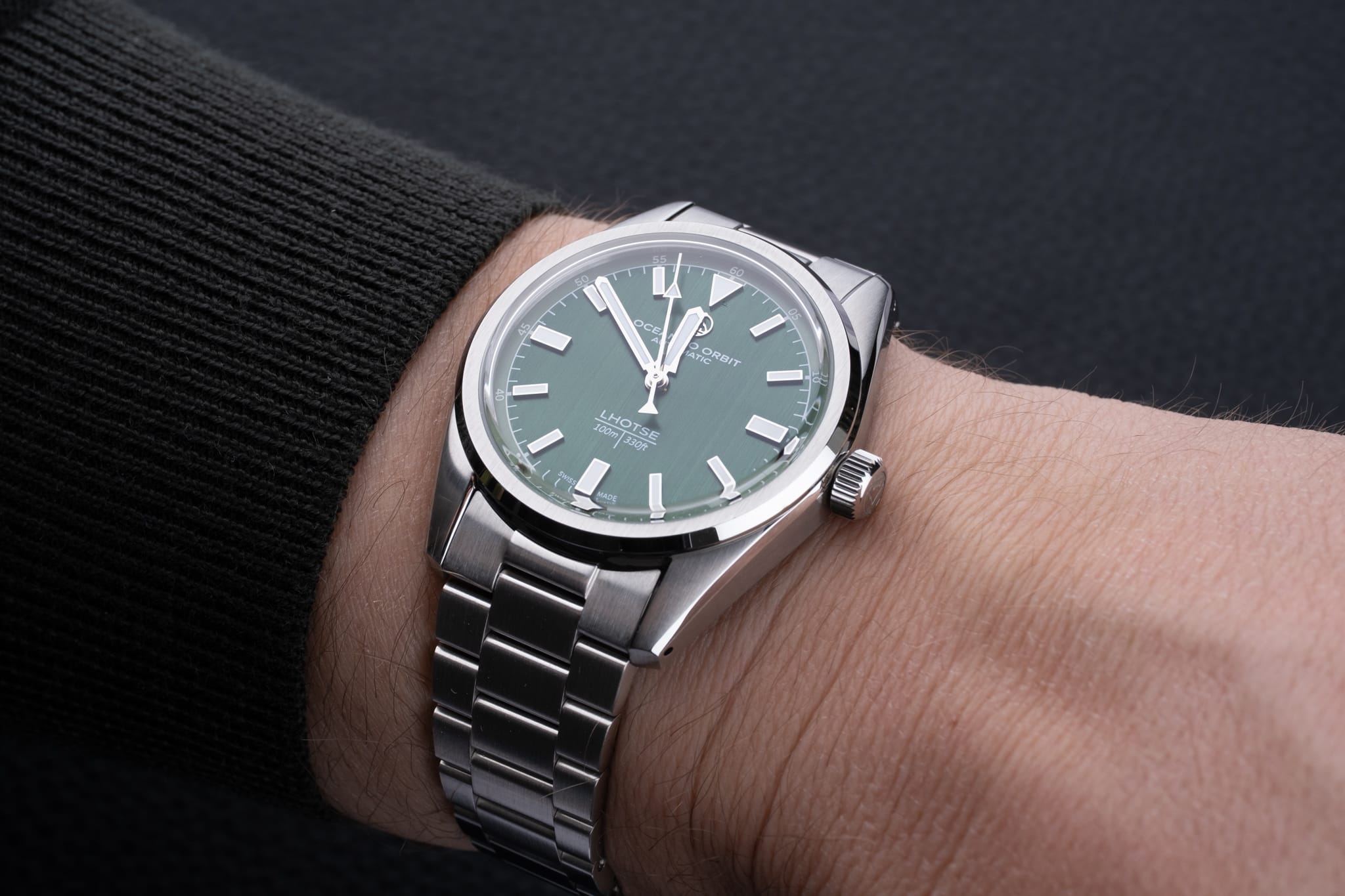
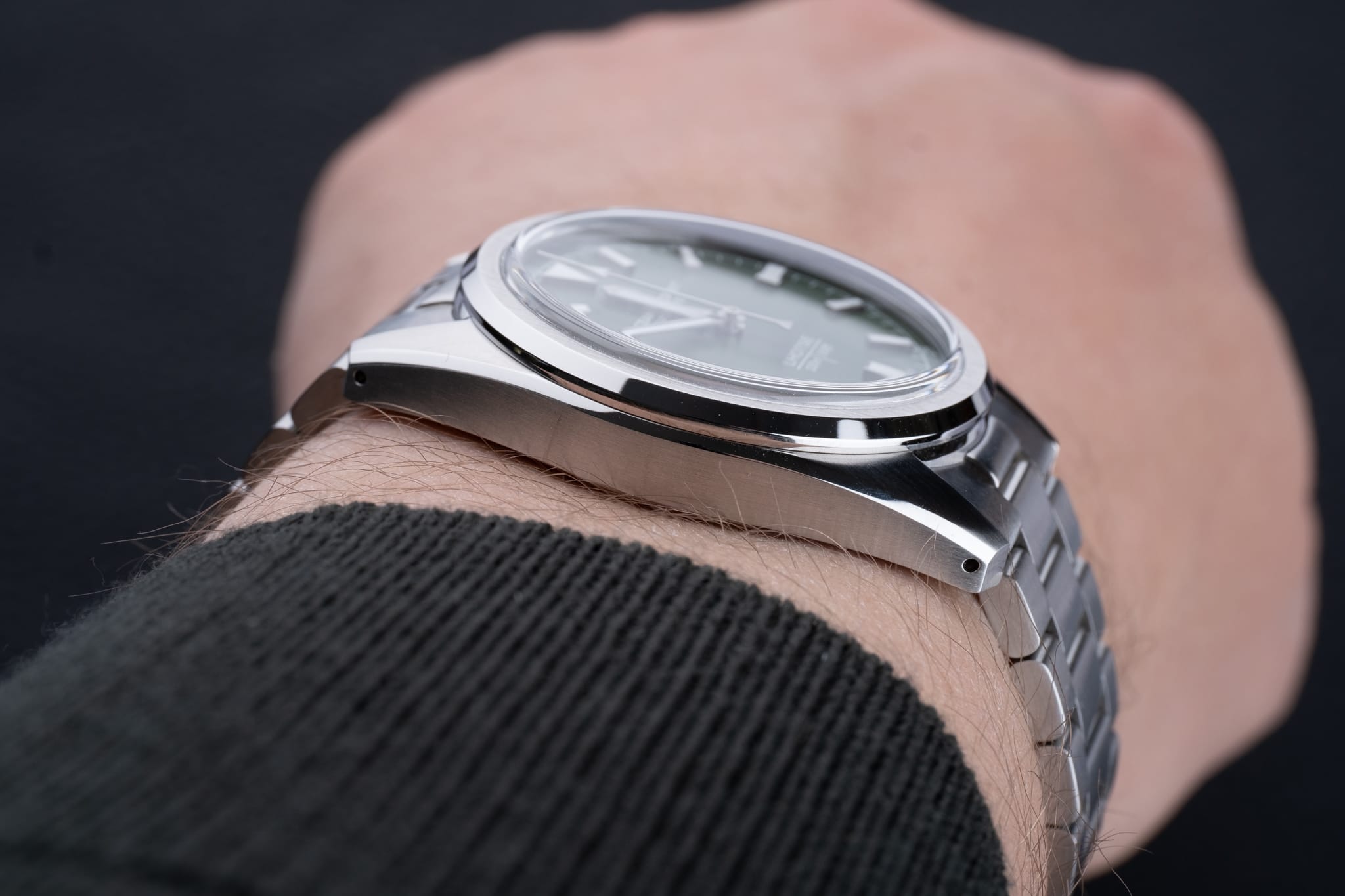
The closed screw-down caseback has a polished outer section and a bead-blasted centre with deeply embossed and polished logo, separated by a wide band of circular brushing engraved with the GPS coordinates for Lhotse, ‘The South Peak’ (the name of the mountain translated from Tibetan) and other details. The polished screw-down crown has uniform knurling and features an engraving of Ocean to Orbit’s mountain logo. The 6.2mm crown is well-proportioned, easy to grip, has a precise click when pulled out to set the time and a confident screw-down. The crown stem is also solid feeling. Water resistance is 100m/330ft, which is perfect for a watch of this type.
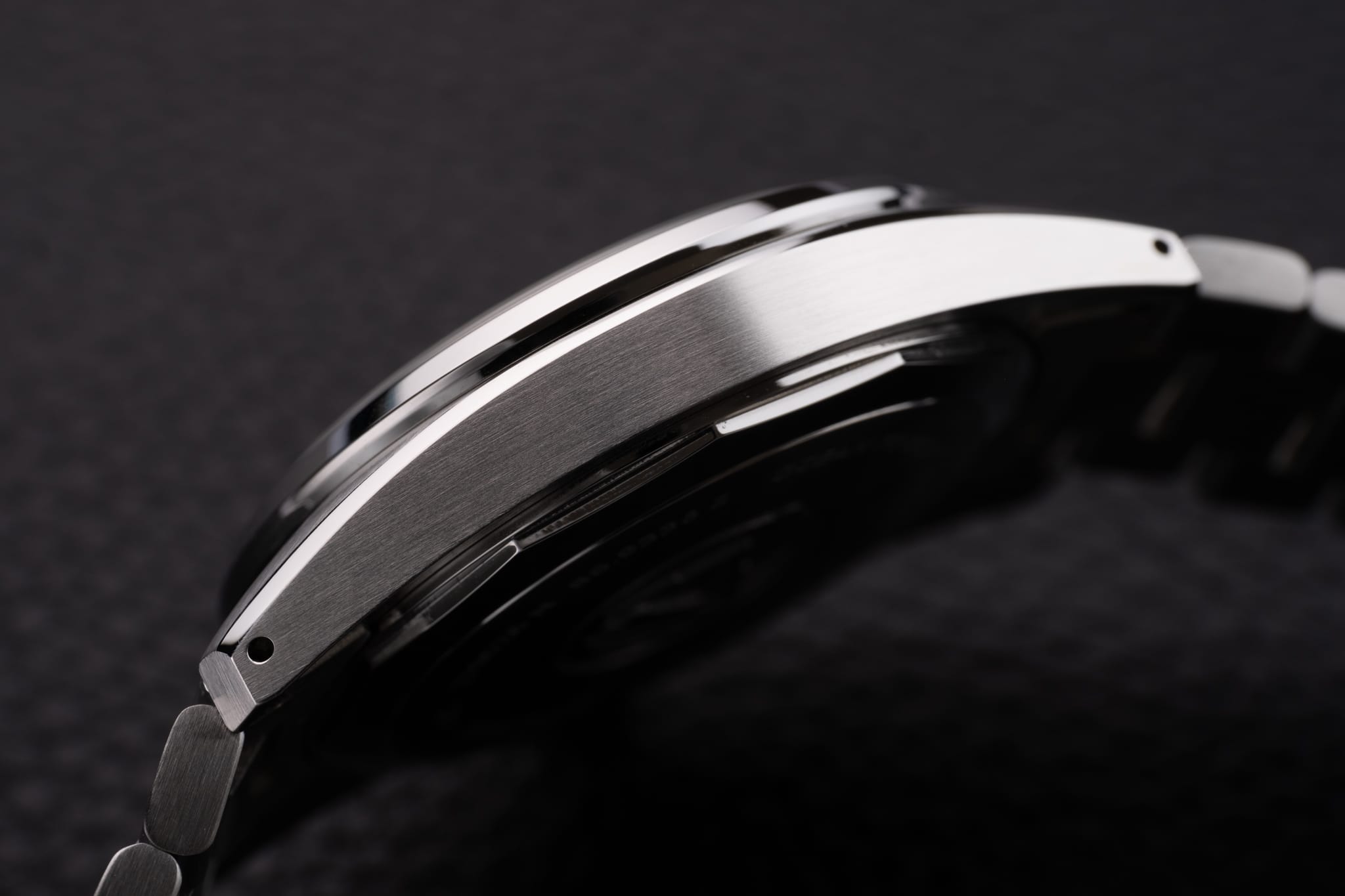
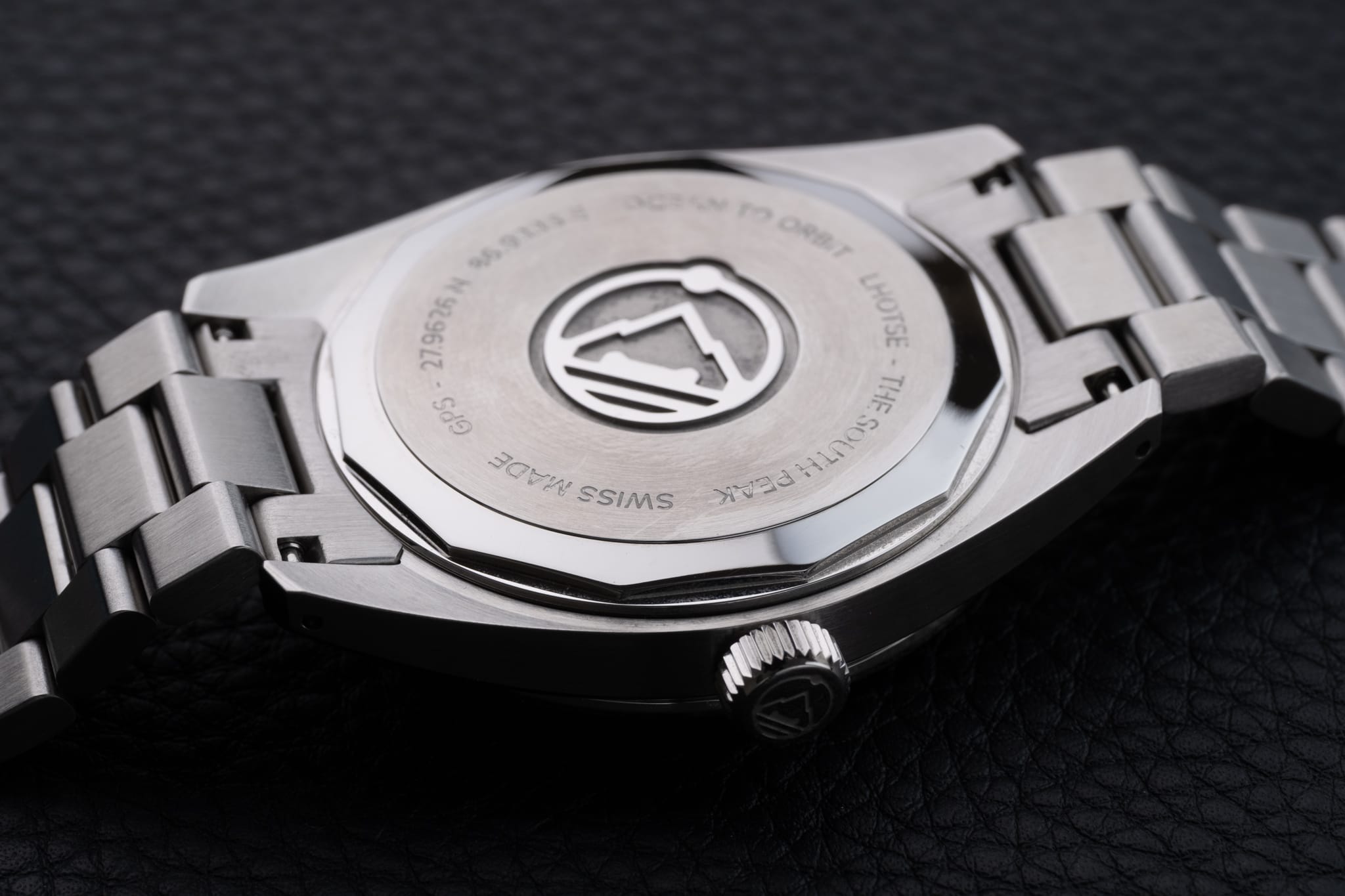
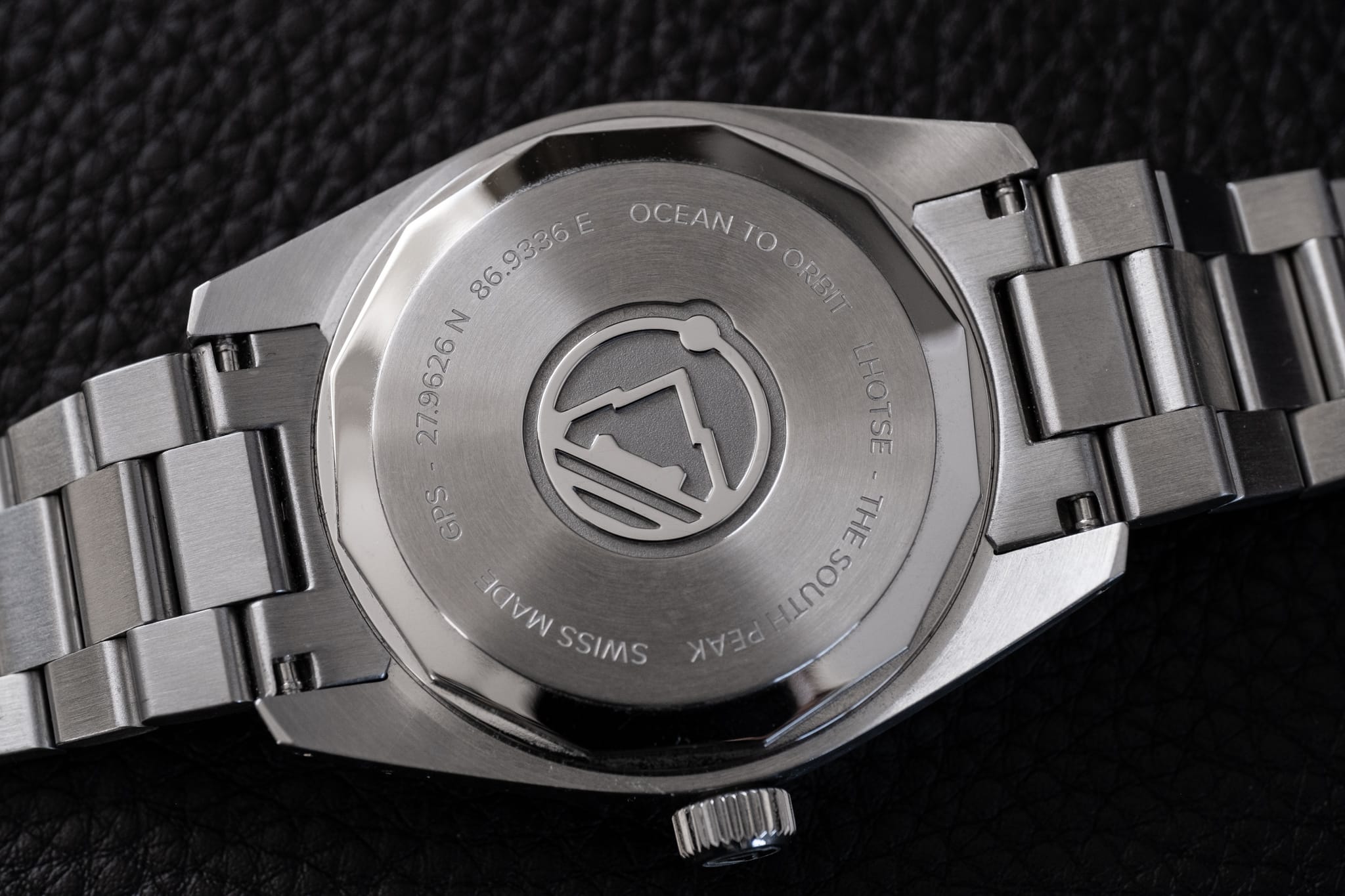
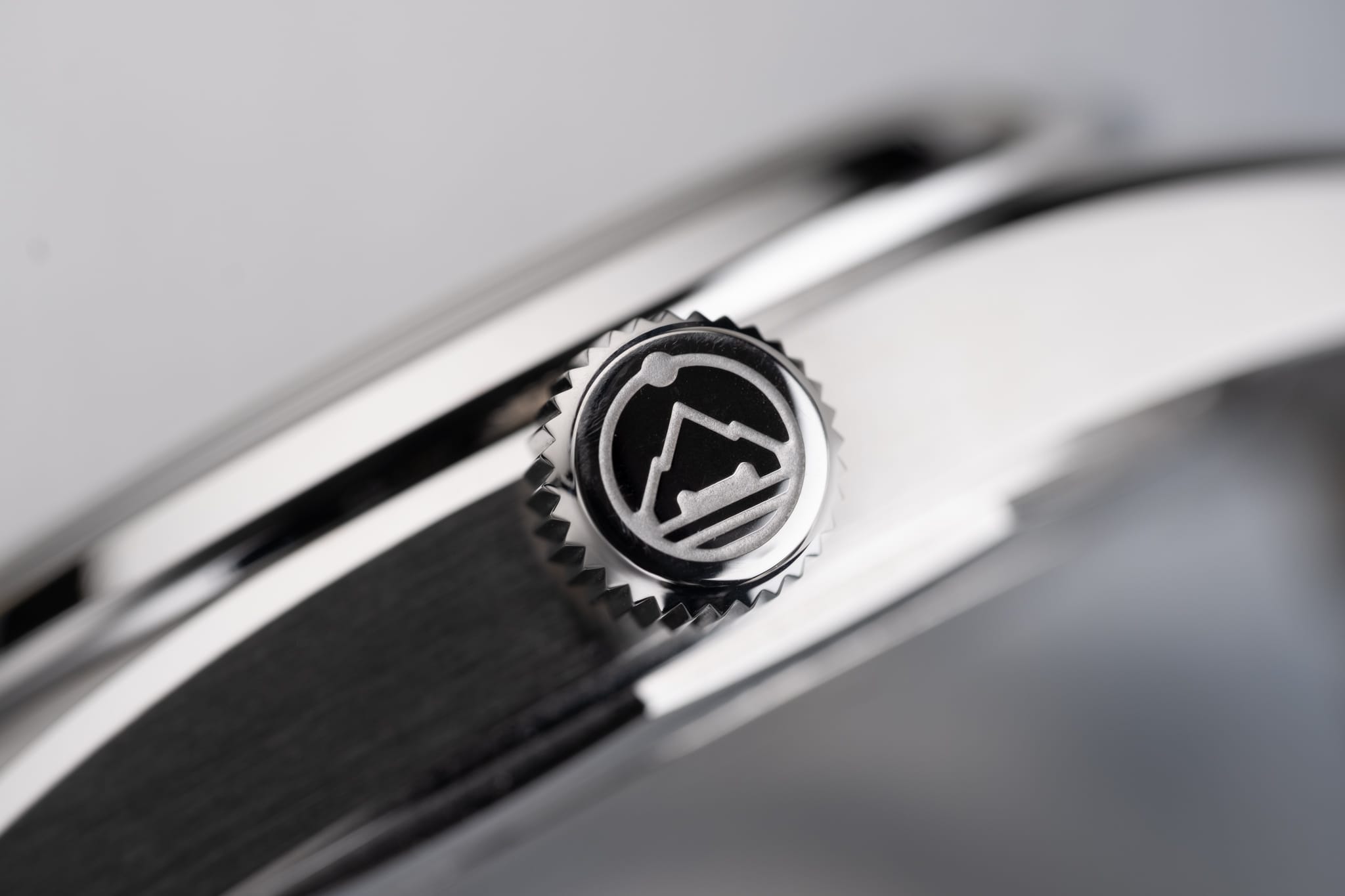
The three-link bracelet is entirely satin-brushed and tapers from 20mm down to 16mm at the clasp. The links are oval-shaped and the removable links are secured by single sided screws (my favourite type of anchor). Whilst the bracelet isn’t fitted with quick-release spring pins, the drilled lugs do make strap changes easier. The single-fold deployant clasp with twin-trigger release features an engraved logo and ‘Lhotse’ and has five micro-adjustment holes. There is no on-the-fly micro adjustment mechanism, which could be a negative for some watch buyers who in recent years have come to expect this feature. Personally, it’s not something that bothers me as I’d take a really great quality bracelet without these conveniences over an average quality one with them any day of the week. And make no mistake, the bracelet, like everything else on the Lhotse is superb quality. It’s impeccably finished and very fluid. Another plus is that the clasp is nice and compact, which together with the tapered design of the bracelet, makes for a really comfortable wearing experience.
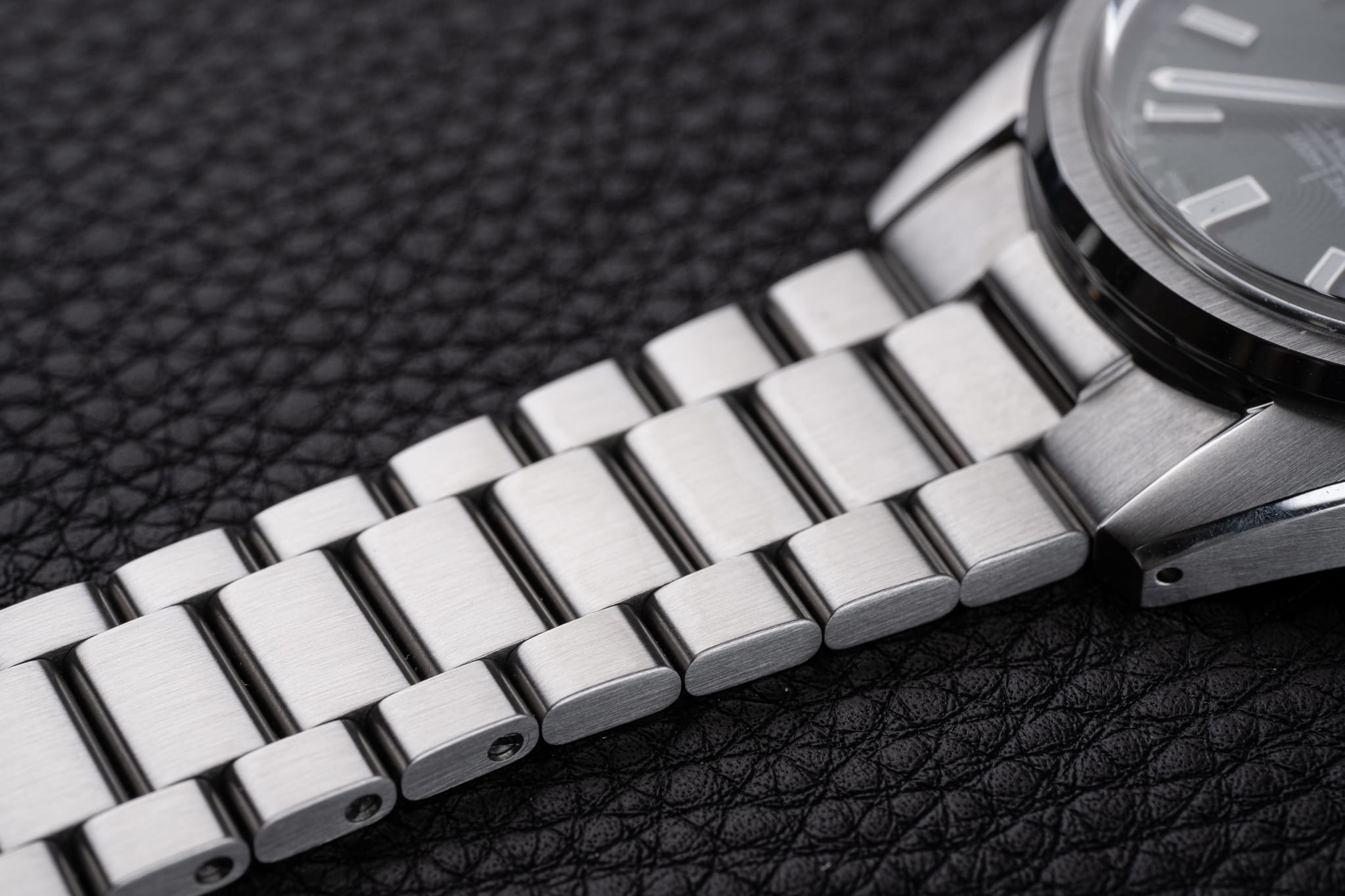
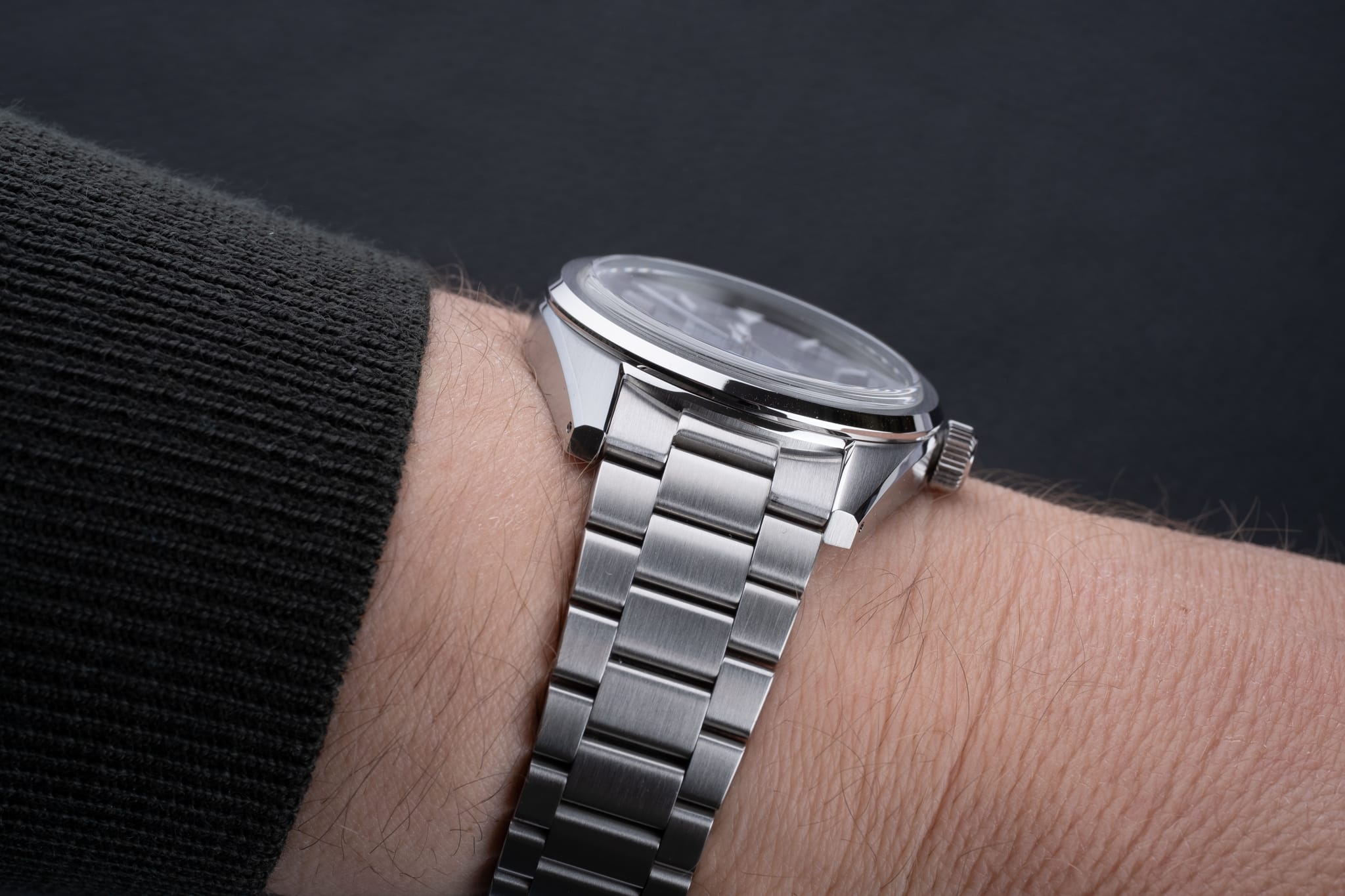


The Dial and Hands
The Lhotse dial is a chameleon, or at least it is on my Mission Green review watch (I can’t comment on the other dial options).Thevertical brushinglooks matt in some lights, metallic in strong sunlight and fades to the background in low light. Shades of green go from being vivid and bright, to subdued, to almost non-existent.It’s like having three watches in one! The dial layout strikes just the right balance between being simple and uncluttered but not basic, something I like in adventure watches. A minute track printed in white sits slightly inboard of the bezel and is accented with Arabic numerals for every five minutes. The applied hour markers comprise thin rectangular blocks for the most part, thicker blocks for the 3, 6 and 9 and an inverted triangle for the 12 o’clock to aid orientation at night. The polished frames are filled with a BGW9 luminescent compound which is strong and long lasting. The polished hands are well-proportioned and it’s nice to see that Ocean to Orbit has created a unique design for the hour hand, said to represent a rocket ship, a playful take on the orbit part of the brand name. The minute hand is meant to be a booster rocket and the tip of the seconds hand a re-entry capsule…hmmm, ok, that’s pushing it. I’ll give them the benefit of doubt with the seconds hand as I can kind of see it when you look at it as one with the counterbalance, but the minute hand is just a pencil-shaped hand and not unique. I really love the pictorial element of the brands logo, especially here on the dial where it’s beautifully cut out and applied at 12 o’clock. ‘Ocean to Orbit’ is printed in white below this. I find the brand name slightly long on the dial (you can’t photograph a 10.08 time and get the full words in the shot).Automatic is printed below the logo and ‘Lhotse’ is printed below the pinion at six with 100m/300ft beneath that, separated by a horizontal line.
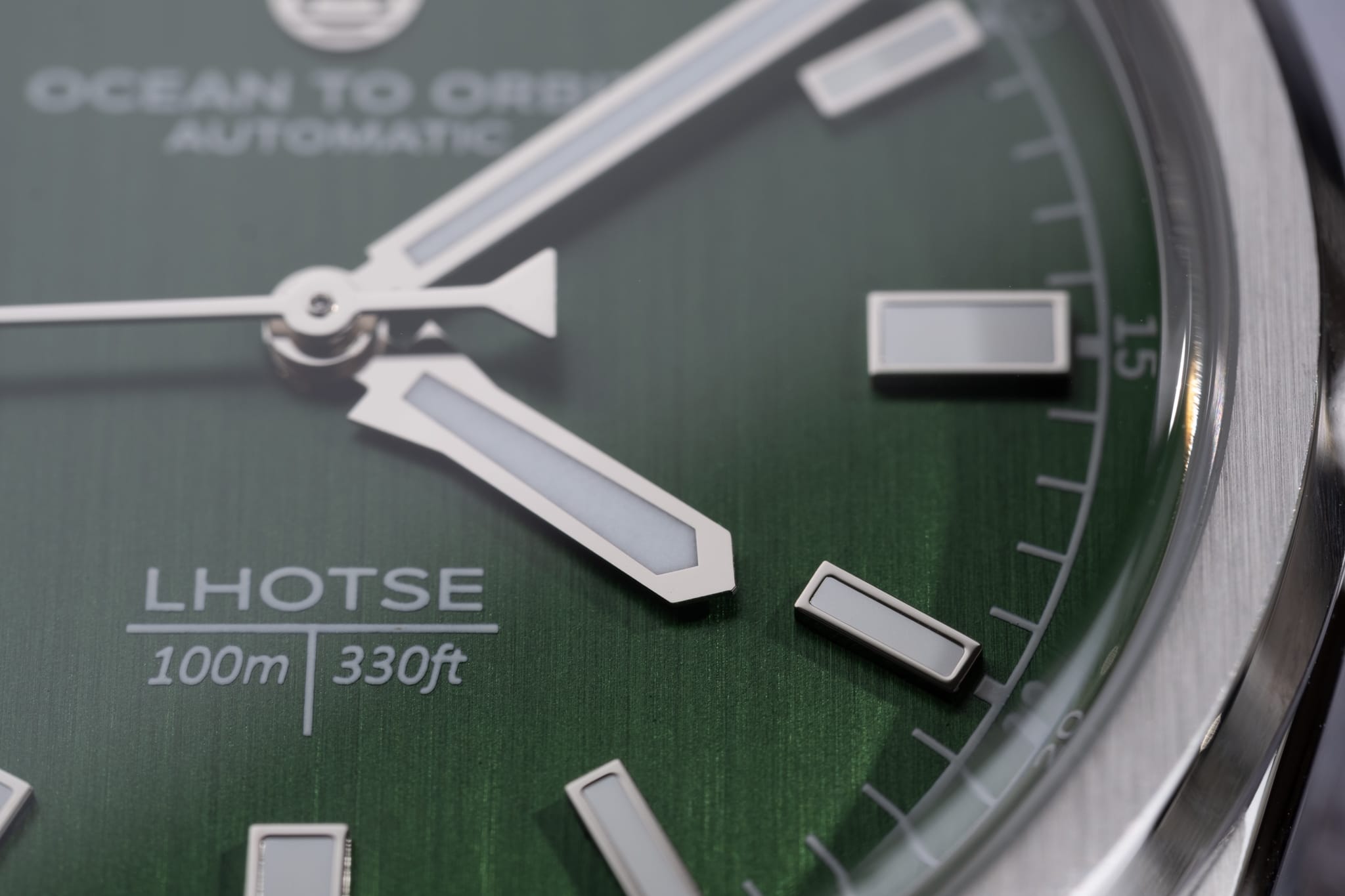
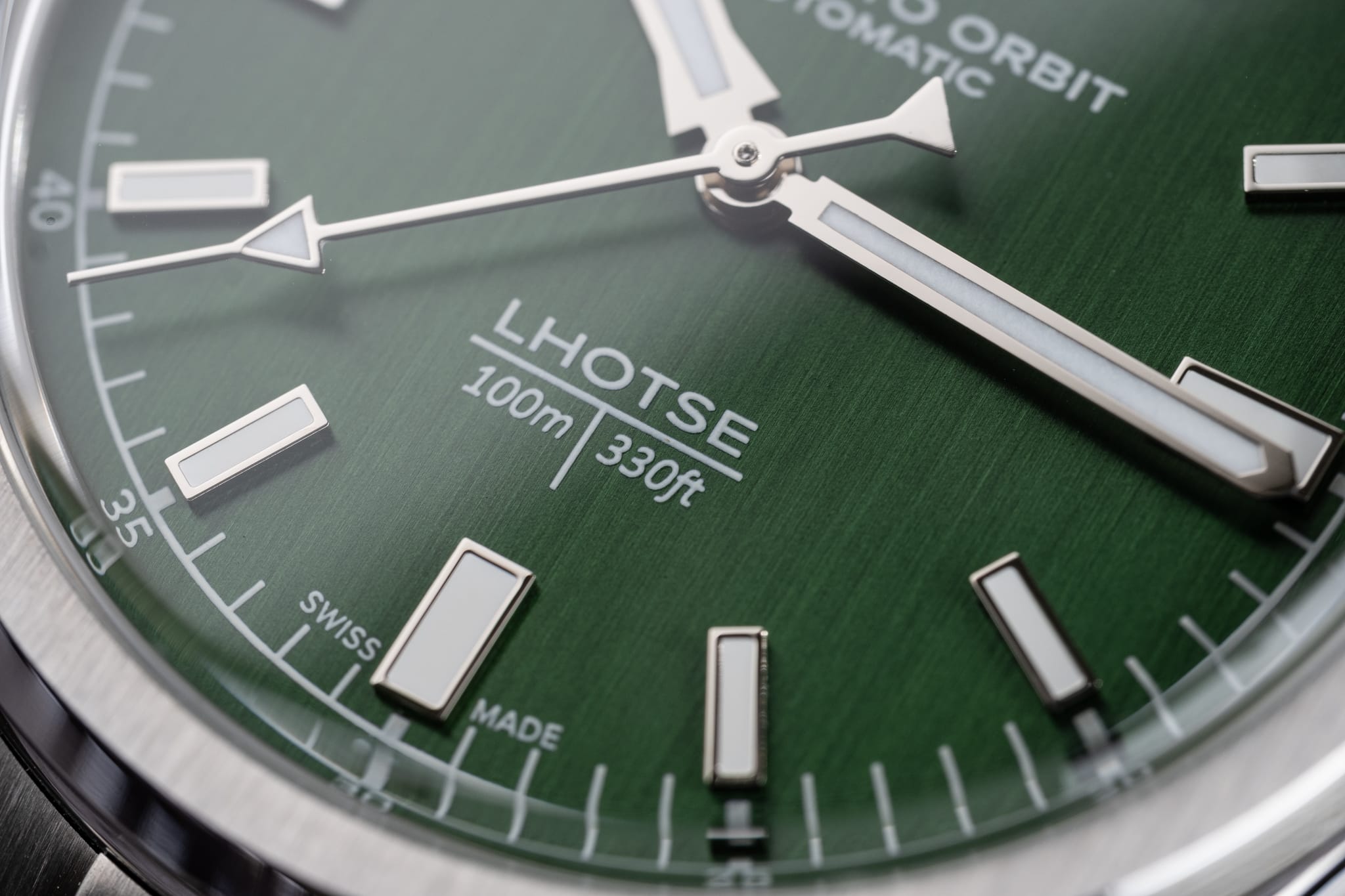

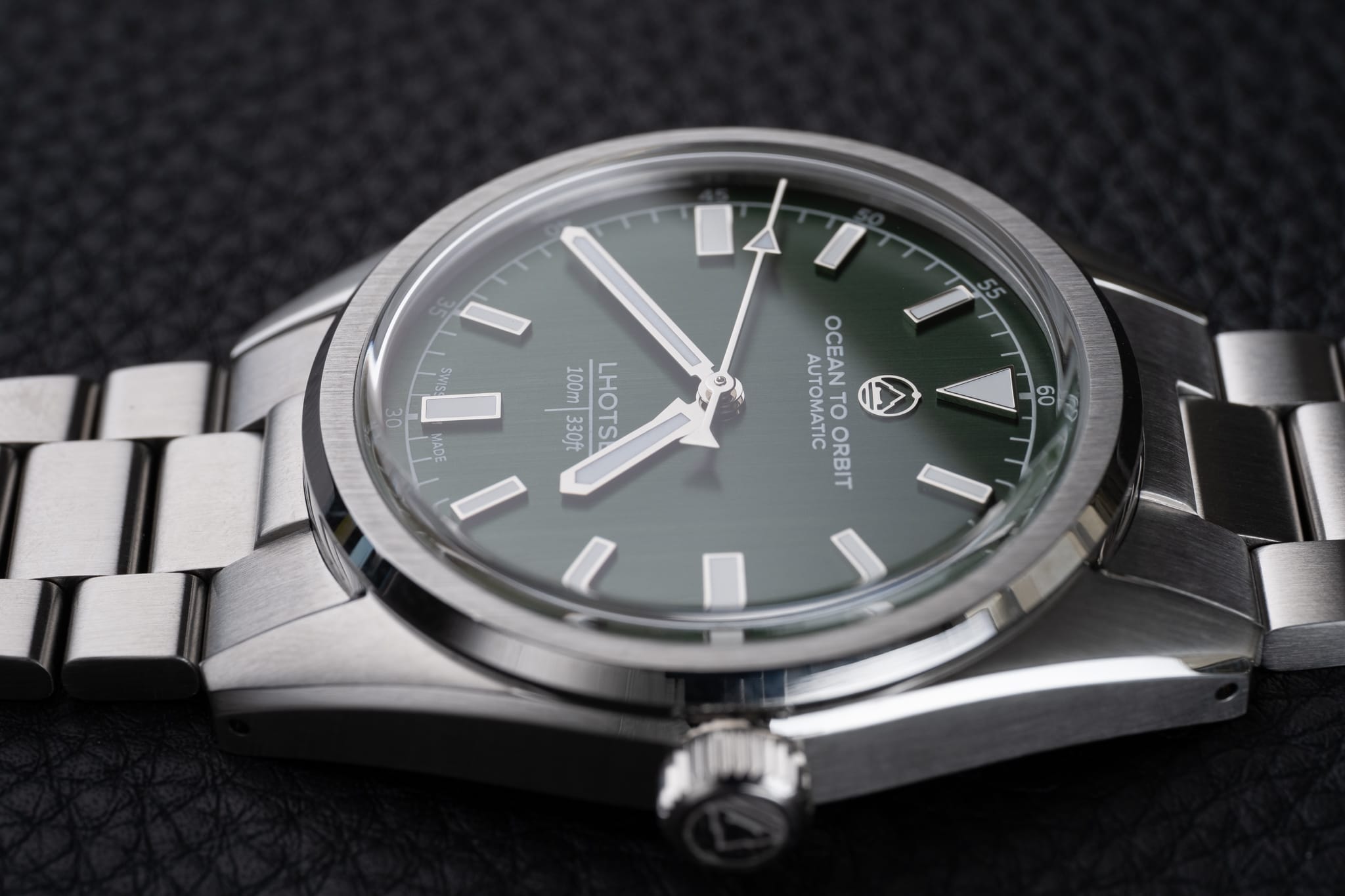
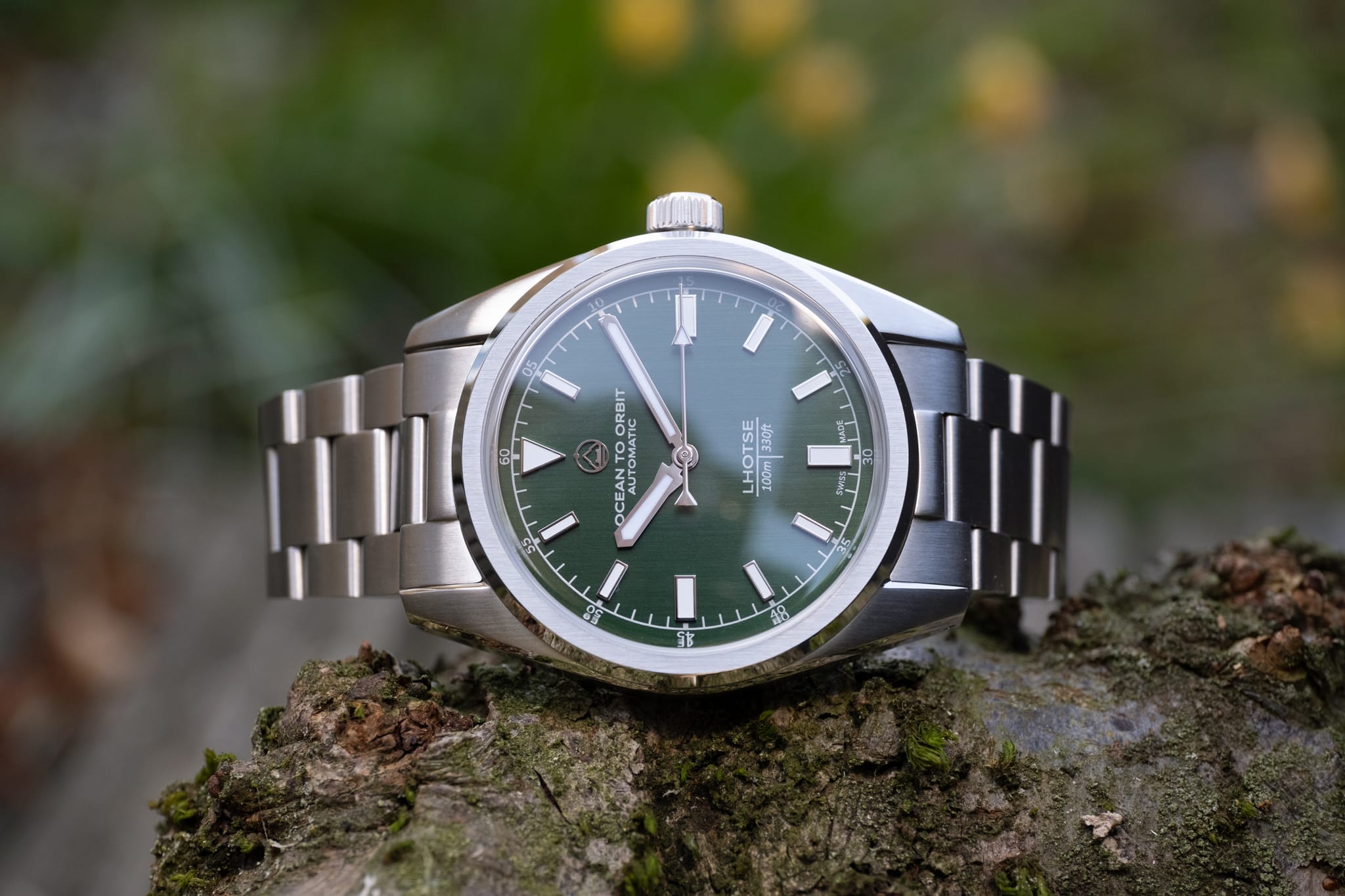
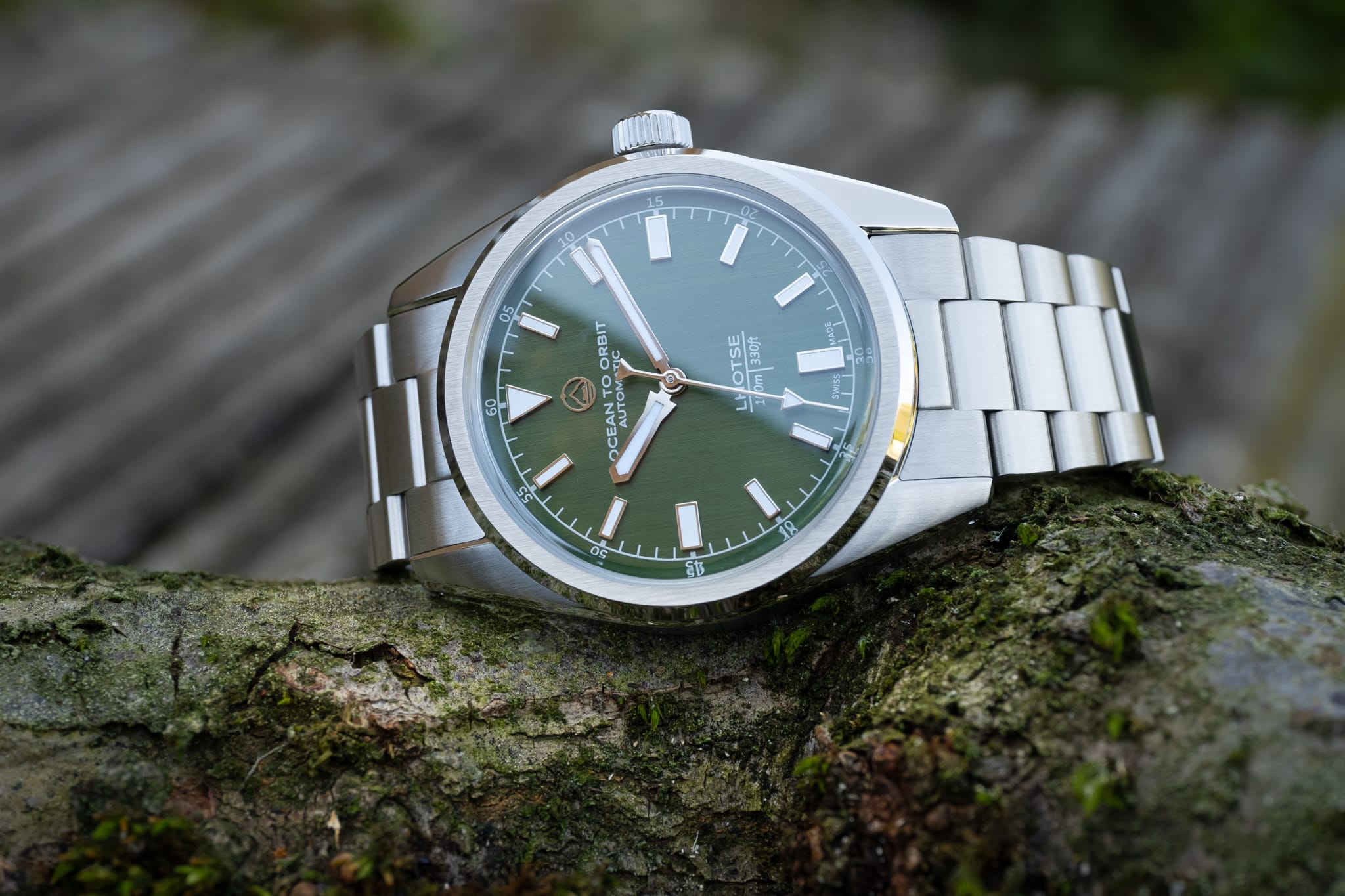


I love the dial design. It’s attractive and has enough going on to keep it interesting, whilst the symmetry of the no-date dial keeps things well-balanced. The execution of the dial, hands and indices is perfect. When using a loupe I couldn’t see any faults, dust on the dial or other imperfections.
Movement
The Lhotse is fitted with a Swiss-made STP 1-21 no date automatic movement with bi-directional rotor. It has 26 jewels, a 40-hour power reserve and beats at 28000 VPH / 4Hz giving a smooth sweep to the seconds hand. You can also manually wind the movement and hack it to stop the seconds hand for accurate time setting. Accuracy is rated as -0/+15 seconds per day tested in three positions, and the movement also has Incabloc shock protection. Being based on the ETA2824, the STP is a solid choice and should offer years of reliable timekeeping and be easy to service when the time comes.
Final Thoughts
£500-£1000 is a hotly contended price bracket with a bewildering array of choice for enthusiasts who know the market well, but you’ve probably gathered by now that I’m quite taken with the Lhotse! This an unbelievably great debut watch from this Aussie microbrand and I’d say it’s one of the best I’ve ever reviewed at this price point. I can only come up with two negatives, the lack of quick-release on the bracelet and the lack of on-the-fly adjustment on the bracelet clasp, both of which will only be negatives for some. Others, like me, won’t be bothered by this. And to be honest, even if these things are negatives to you, my bet is that you’d probably overlook them if you could see and handle the watch in person!
Being able to review watches like the Lhotse puts a smile on my face and makes my job a joy. It’s a watch that just oozes quality and can easily compete with mainstream watches at double the price and more. David and Siddhartha cite the Rolex Oyster Perpetual (OP) as one of the watches that influenced the development process of the Lhotse and that’s plain to see, especially in the level of refinement on offer here. The Lhotse also shares other Rolex attributes; it’s robust, reliable, versatile and has a timeless elegance. However, whilst it shares this ethos, the Lhotse is absolutely its own thing and has plenty of character, without ever being fussy. If you were to cover the logo and do a straw poll of non-watch nerds, my bet is that as many people would opt for the Lhotse as the hallowed coronet to be honest! The proportions are bang on, the design looks fully resolved, the finishing is impeccable and there are some lovely details. Put simply, the Lhotse is a no-brainer for £695! Who says you can’t have your adventures with a healthy dose of style!
Have you got the hots for the Lhotse?!
What do you think of the Ocean to Orbit Lhotse? Maybe you already own one? Let us know in the comments below!




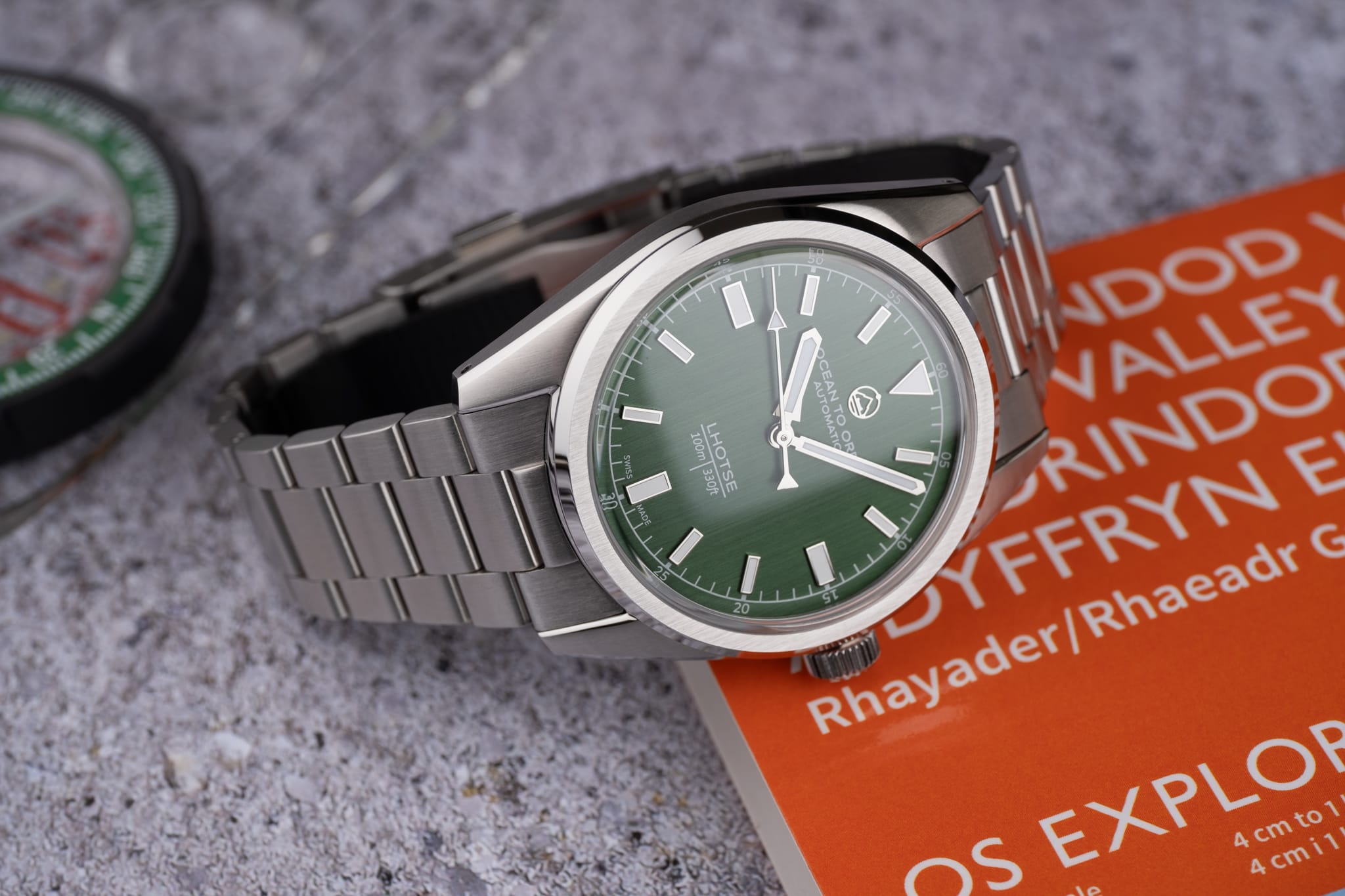
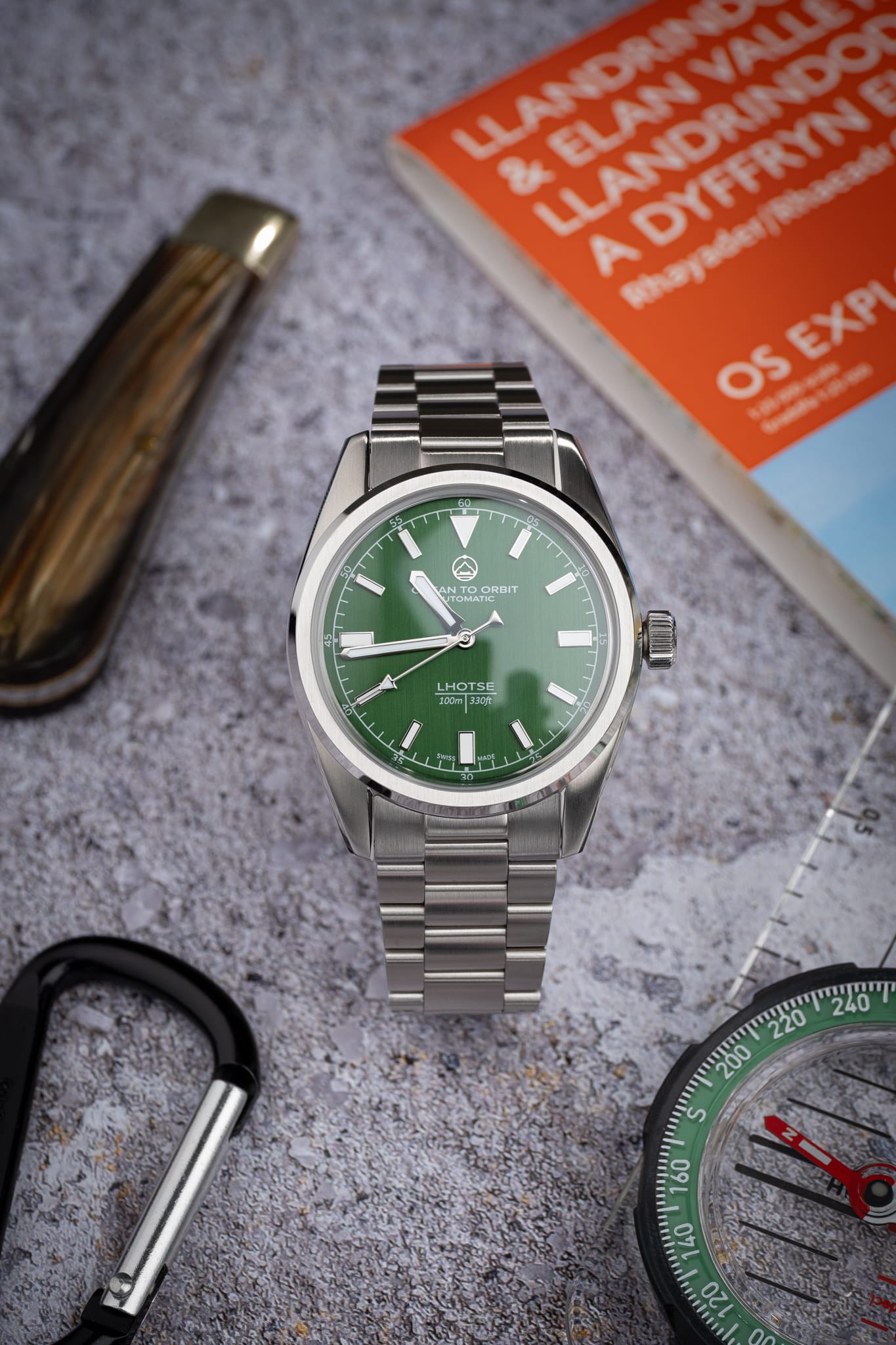

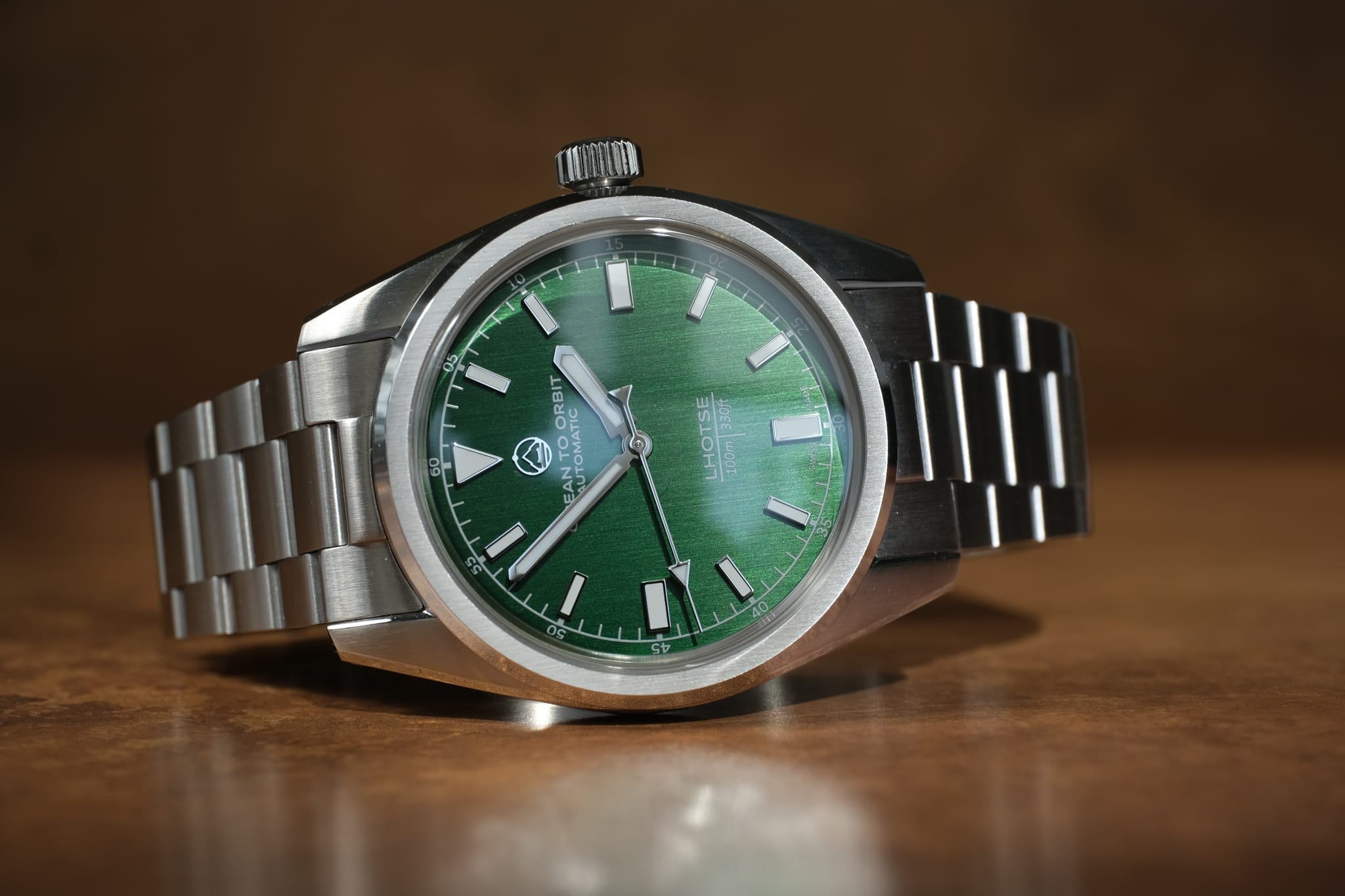
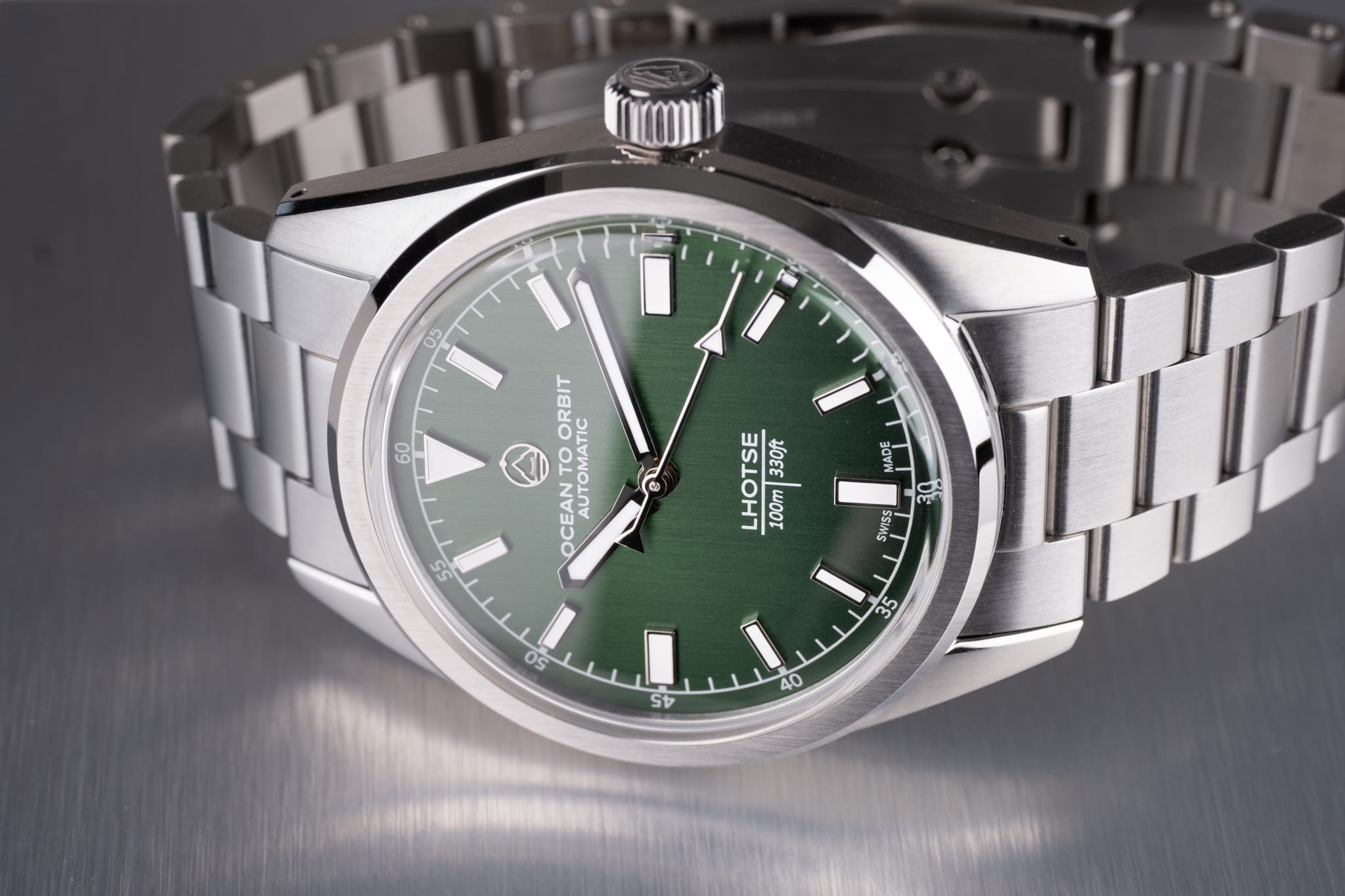
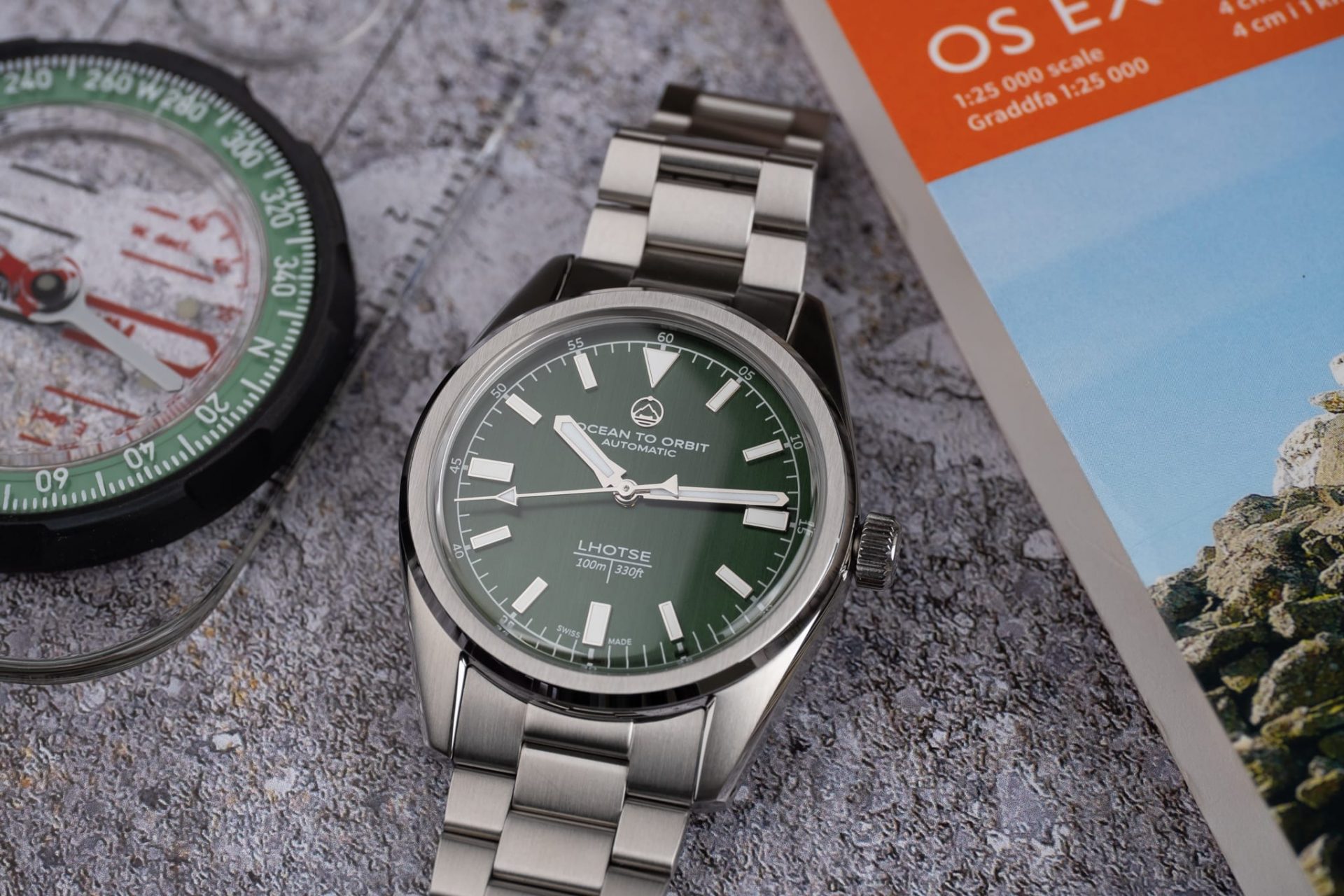

Gary Downs
18 April, 2025 at 8:44 am
I’ve owned my blue dial O2O for a few months now and love it ! It’s a very reasonable price and outstanding specs. Nice review and spot on. Living in Melbourne myself I have to support theses guys.